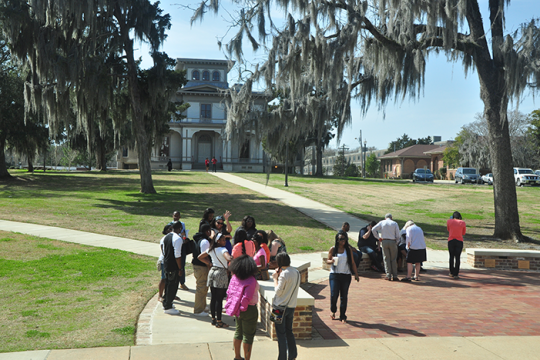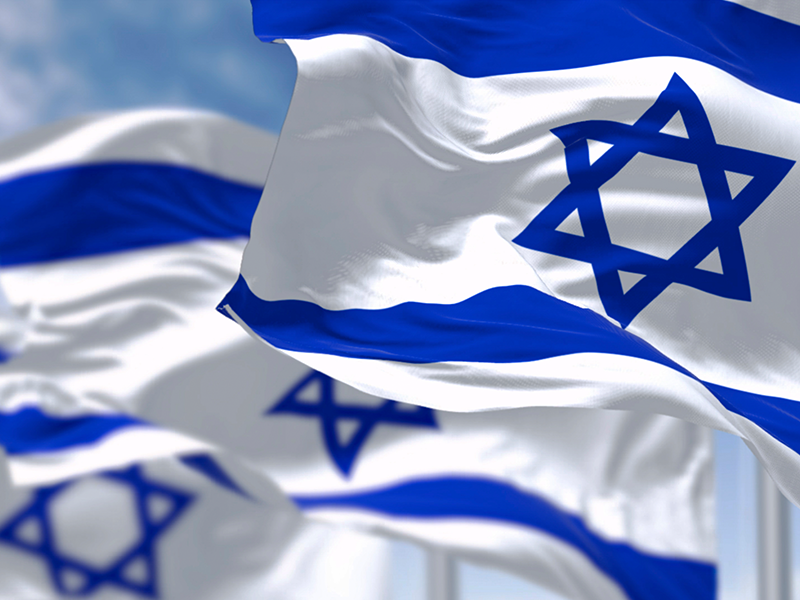What You Can Learn from a Chocolate Seder
The aroma of chocolate eggs (beitzah), chocolate covered matzah, green-colored chocolate (karpas) a solid chocolate seder plate, several chocolate nut clusters (charoset), and a 100% cacao bar (maror) wafted our friends into our home. Three of the five rabbis at the table had never been to a seder – a chocolate seder that is.
Rabbi Lennard Thal, senior vice president emeritus of the Union for Reform Judaism (URJ), reflected afterwards, “This was a ‘first’ for me and I loved the experience even more than the chocolate (now, that, as a self-professed and proud ‘chocoholic,’ is saying something!).” The creative chocolates mixed into the political and social themes surprised guests as chocolate became the medium for teachings about ethical kashrut, worker equity, and food sustainability.
The Haggadah for a Socially Responsible Chocolate Seder served up discussions of child slavery, economic justice, and fair trade. This chocolate-soaked seder built on Passover’s traditional messages of freedom, dignity, and fairness at a table laden with brown-on-brown treats. We added chocolate related afflictions to the list of the 10 plagues: poor quality chocolate, suffering in the growing of cocoa beans, and the health problems that could result from its immoderate consumption. (Check out these ingredients for a terrific, age-appropriate chocolate seder for the kids in your midst.)
The Ha Lachma Anya (this matzah is the bread of poverty) held up the income disparity between cocoa farmers and chocolate consumers. Though most of the world’s beans are grown in Africa, little chocolate is actually processed there. Many toil mightily to grow the cocoa beans for the chocolate we devour. “I know they (cocoa beans) make good food but I’ve never seen that,” admitted Ivory Coast cocoa bean farmer Alfonse in a video clip we watched together. Then, on camera, he relished his very first taste of chocolate. This chocolate seder seeks the harvesting of the fruits of productive, meaningful, and safe labors.
New and serious concerns percolated in the conversation to supplement the traditional Four Questions:
- How much more would we be willing to pay for slave-free chocolate?
- What is the role of globalization in our chocolate?
- Who are the chocolate lobbyists?
- Since it is hard to find Kosher for Passover, Fair Trade chocolate, which chocolate should we choose?
At the Avadim Hayinu section (“We were slaves in Egypt”) of the seder, we watched BBC footage about child slavery in cocoa growing in West Africa. Journalist Paul Kenyon managed the rescue of 12-year-old Fatao from the machete-reliant work of gathering cocoa beans in Ghana. Fatao had been kidnapped from his home in Burkina Faso the prior year by a family member, and finally was reunited with his mother during the report. In the summer of 2015, the U.S. Department of Labor released its study of the problem of endangered child labor through Tulane University, and documented that over 2,000,000 children work in unsafe conditions in the cocoa fields of West Africa.
Fortunately, as a result of the partnership among Rabbi Jill Jacobs (T’ruah: The Rabbinic Call for Human Rights), Ilana Schatz (Fair Trade Judaica), and Rabbi Aaron Alexander (American Jewish University) it is now possible to purchase online a Fair Trade, Kosher for Passover chocolate made by Equal Exchange. Surprisingly, there is little if any fair trade, slave free chocolate for Passover in Israel. Ashira Abramowitz, a recent bat mitzvah at Kehilat Kol Haneshama, a Reform synagogue in Jerusalem, has been petitioning Elite Chocolate and Confectionery to offer fair trade Israeli chocolate especially for Passover.
This year, slather truly Pesachdik chocolate into your seder.
Related Posts

Supporting Survivors of Domestic Violence in the Jewish Community

Two Out of Two

